Across the globe, animals embark on extraordinary migrations that seem almost mythical. From delicate butterflies crossing continents to mighty whales navigating oceans, these journeys are tales of resilience, instinct, and survival. Guided by magnetic fields, celestial cues, and ancient memories, these creatures defy every obstacle to complete their odysseys. Here are 20 of the most fascinating and beautiful migrations that showcase the unparalleled determination of the animal kingdom.
1. Arctic Terns
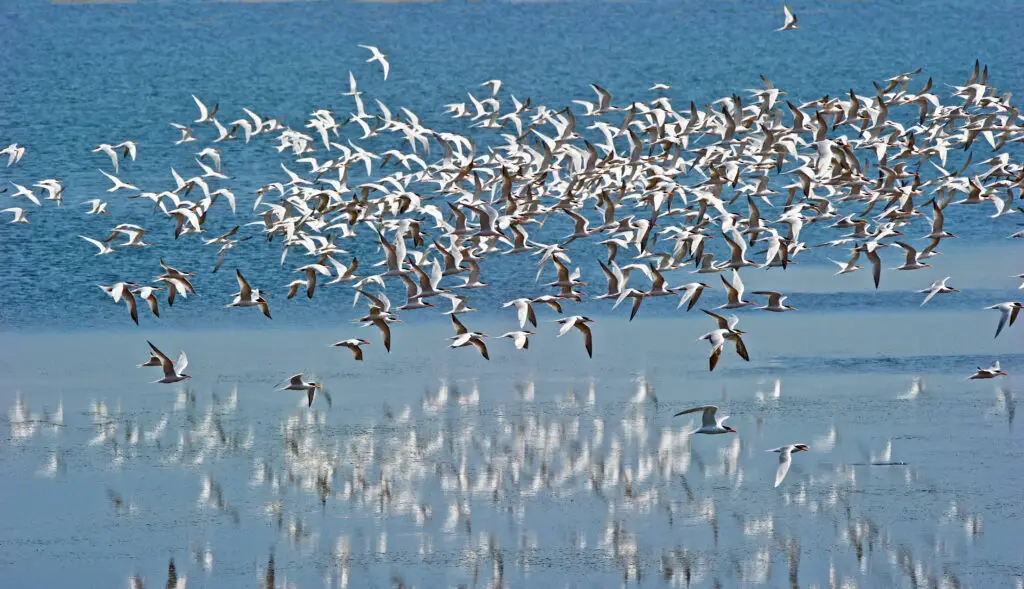
Shutterstock
The Arctic tern holds the record for the world’s longest migration, traveling up to 44,000 miles annually between the Arctic and Antarctic. Following endless summers, these birds harness wind patterns and Earth’s magnetic field to cross vast, featureless oceans. Remarkably, terns can live up to 30 years, meaning one bird may fly over 1.3 million miles in its lifetime. Scientists have discovered they even sleep while flying, resting one hemisphere of their brain at a time. These tireless voyagers redefine endurance, navigating a journey that spans nearly half the globe.
2. Monarch Butterflies
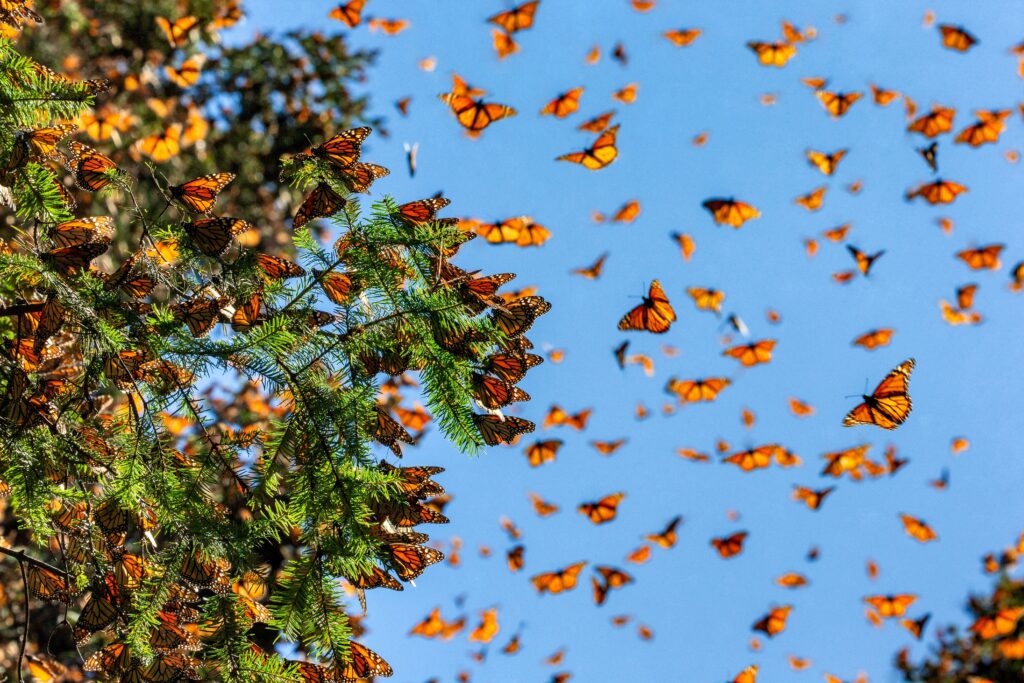
Shutterstock
Monarch butterflies’ migration is a spectacle of fragility and strength. Millions travel up to 3,000 miles from Canada to Mexico every fall, guided by the sun and Earth’s magnetic field. This epic journey spans four generations, with only the final “super generation” completing the round trip. Tragically, only 10% survive the perilous trek, facing storms, predators, and habitat loss. Upon arrival, they cluster in Mexican fir forests, creating shimmering blankets of orange and black. Despite their delicate wings, monarchs embody resilience, and their migration is a vibrant testament to nature’s determination.
3. Wildebeest
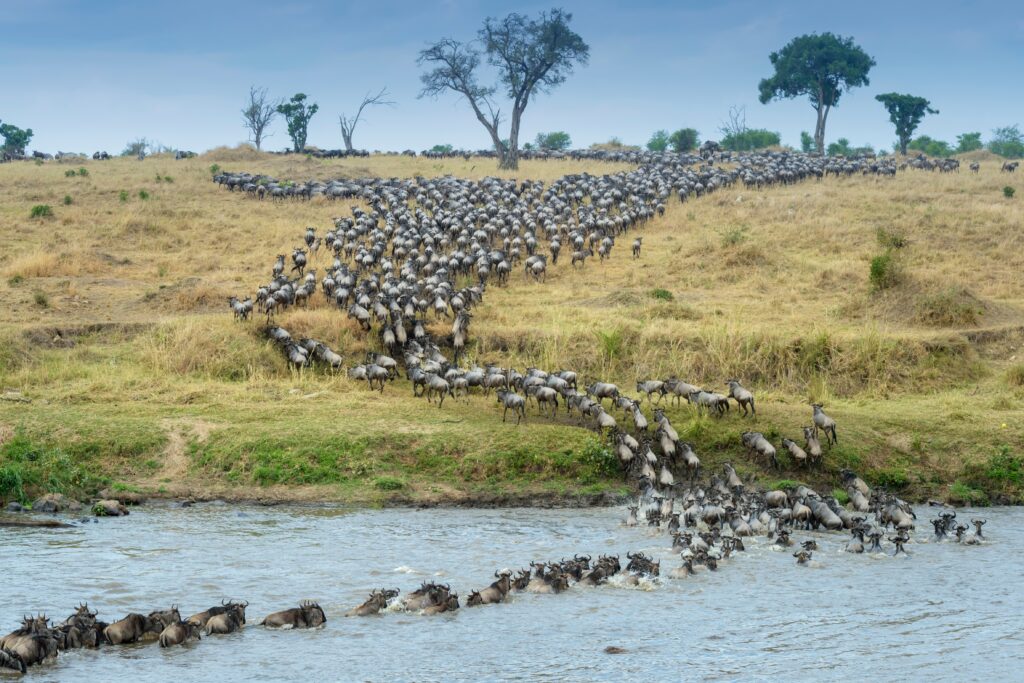
Shutterstock
Over 1.5 million wildebeest surge across the Serengeti each year in search of greener pastures, their migration spanning 1,200 miles. This awe-inspiring journey is fraught with danger—up to 250,000 perish annually, falling prey to crocodiles during river crossings or exhaustion in harsh terrain. Guided by rain patterns and an acute sense of smell, the herds move as one, their synchronized steps feeding an entire ecosystem. Stragglers face certain death, but the cycle persists, an ancient rhythm of survival that sustains the Serengeti’s delicate balance.
4. Humpback Whales

Shutterstock
Humpback whales undertake migrations of up to 16,000 miles round-trip, traveling between polar feeding grounds and tropical breeding waters. These 50-ton giants rely on fat reserves built during their feeding season to fuel their journey. Along the way, humpbacks sing haunting, complex songs, believed to aid navigation or communication. Calves born during migration must grow strong enough to endure the trek back north, where predators like orcas lurk. Their journey is a testament to the strength of maternal bonds and the mysteries of ocean life.
5. Dragonfly Globe Skimmers
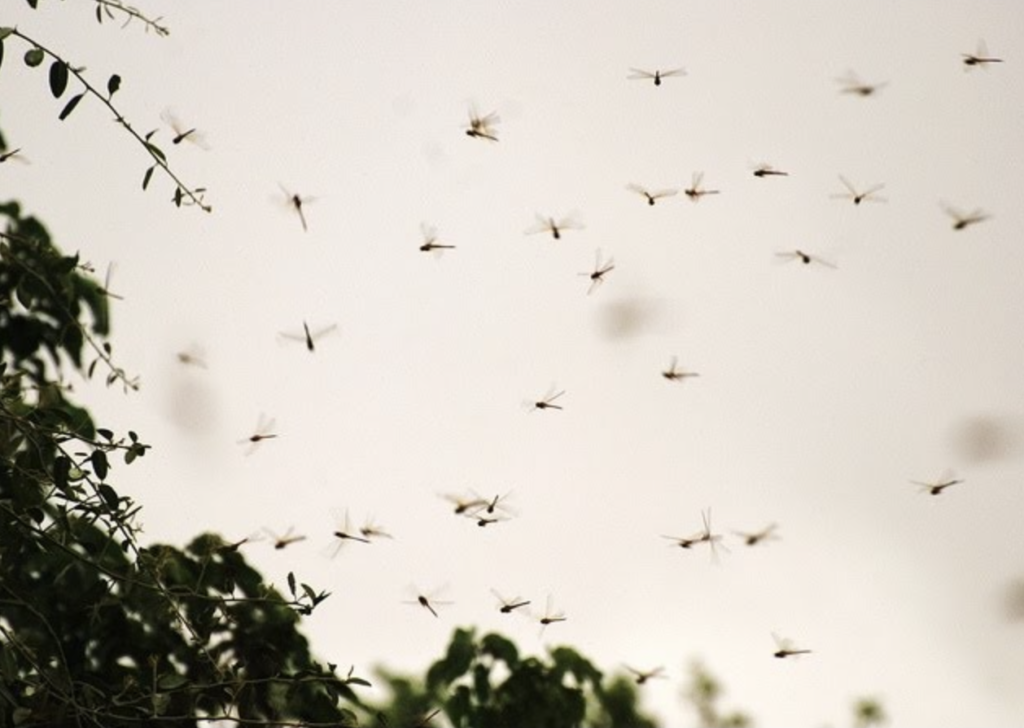
YouTube
Weighing less than a paperclip, dragonfly globe skimmers make the longest migration of any insect, traveling up to 11,000 miles across oceans. These tiny adventurers rely on wind currents to conserve energy, with multiple generations completing the journey. Their route, spanning from India to East Africa, remains a scientific marvel. Many perish mid-flight due to exhaustion or storms, yet their persistence ensures the survival of the species. Delicate yet determined, these dragonflies demonstrate the incredible tenacity of even the smallest travelers.
6. Sockeye Salmon
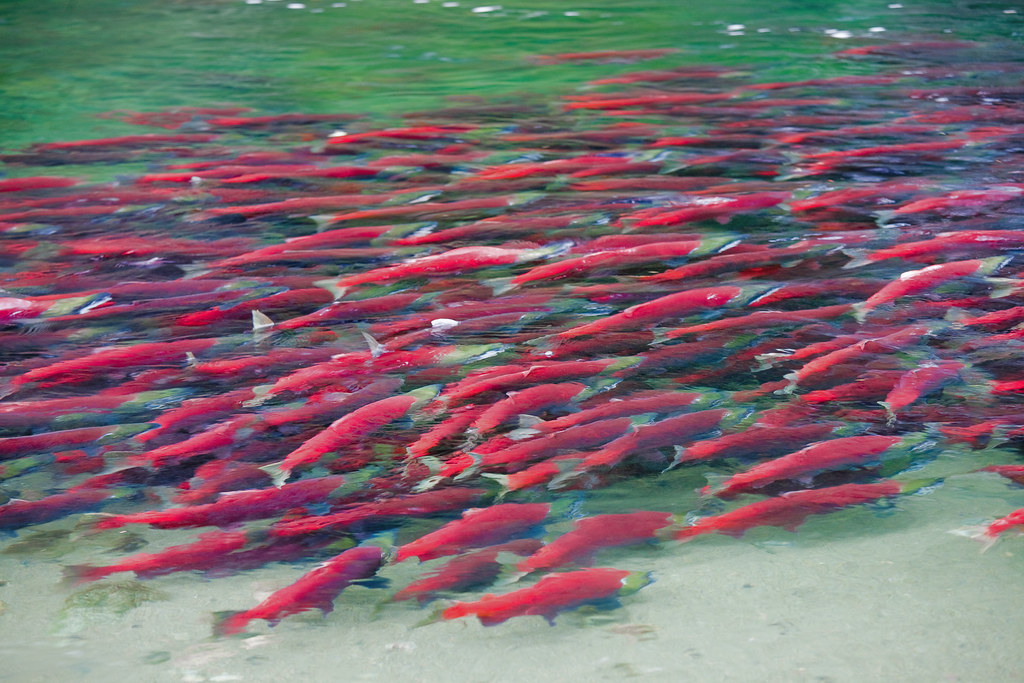
Flickr
Sockeye salmon fight their way upstream for up to 900 miles to return to their freshwater spawning grounds. Along the way, they leap waterfalls, evade predators like bears and eagles, and battle against powerful currents. Guided by their acute sense of smell, they find the exact river where they were born. Tragically, their journey ends in death, as their bodies decompose and nourish the next generation. Only 10–20% survive the migration, but their sacrifice sustains ecosystems and ensures the species’ continuation.
7. Bar-headed Geese
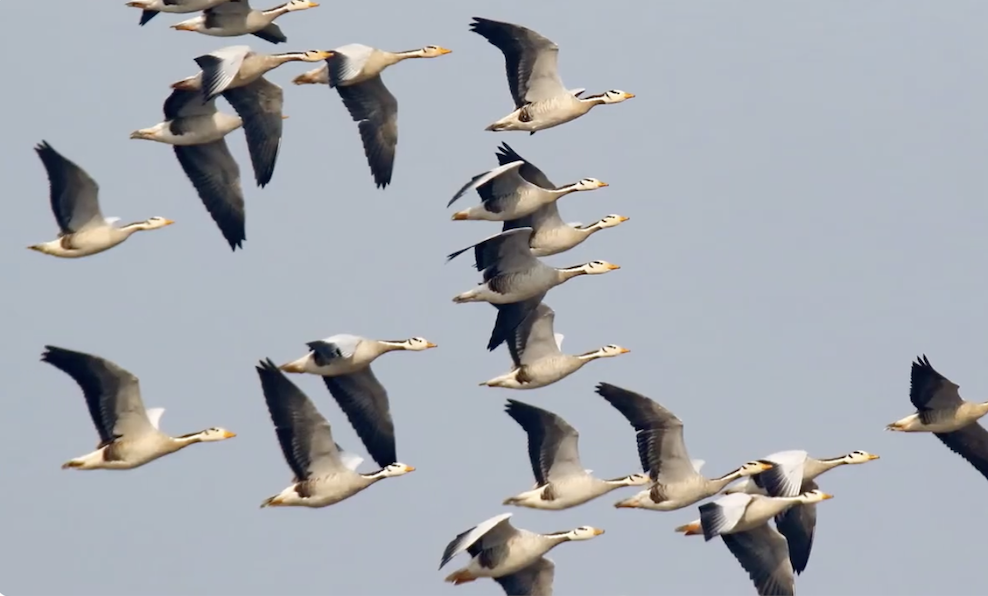
YouTube
Bar-headed Geese defy gravity, flying over the Himalayas at altitudes of up to 29,000 feet, higher than Mount Everest. Breathing in thin air that would incapacitate most creatures, they use hemoglobin-efficient blood and powerful wingbeats to endure their grueling journey. These geese travel thousands of miles between breeding grounds in Central Asia and wintering sites in South Asia, relying on wind currents to conserve energy. Their flight is a breathtaking marvel of biology and endurance, inspiring awe in scientists and onlookers alike.
8. Flamingos
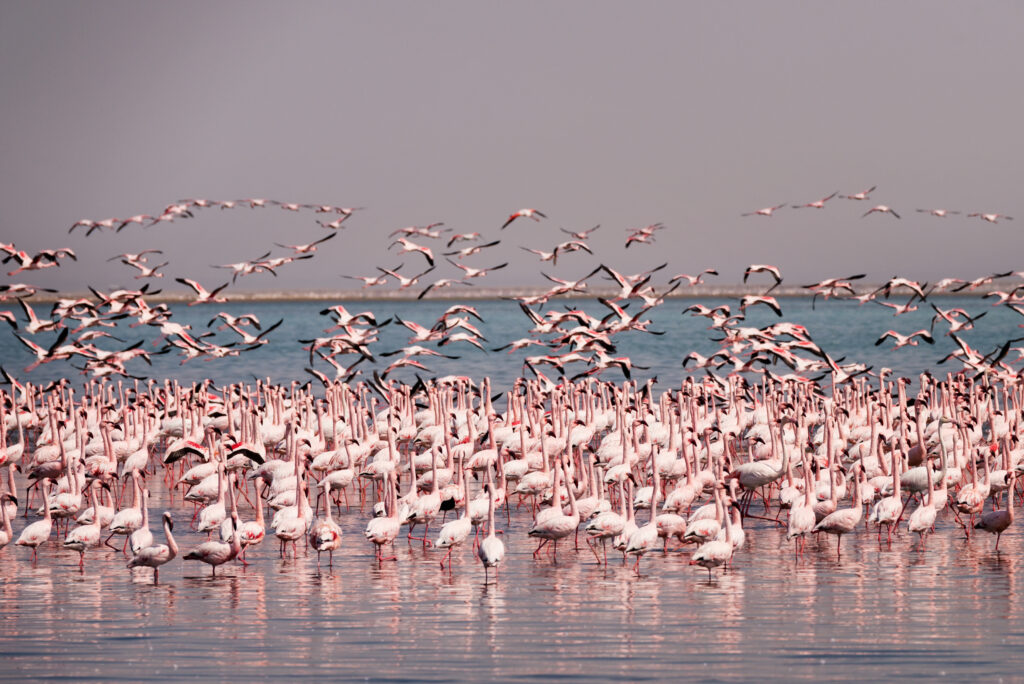
Shutterstock
Flamingos take to the skies in dazzling flocks, traveling hundreds of miles to find breeding grounds with the perfect water levels. Their migration depends on rainfall patterns, and during flight, they form breathtaking V-shaped formations. Juveniles face the greatest challenges, with only 50% surviving their first journey. Their vibrant pink feathers, a result of their diet, light up the skies, making their migration one of the most beautiful spectacles in nature. Flamingos embody grace and perseverance as they adapt to ever-changing environments.
9. Painted Lady Butterflies

Shutterstock
Painted lady butterflies undertake a migration of up to 9,000 miles, traveling from Africa to Europe. Riding high-altitude winds, they cross deserts and mountains in one of the longest migrations for any insect. Despite their fragile appearance, these butterflies endure harsh weather and predators, transforming the skies into a vibrant sea of orange and black. Scientists are still unraveling the secrets of their journey, but their resilience proves that even the most delicate creatures can achieve the extraordinary.
10. Sandhill Cranes
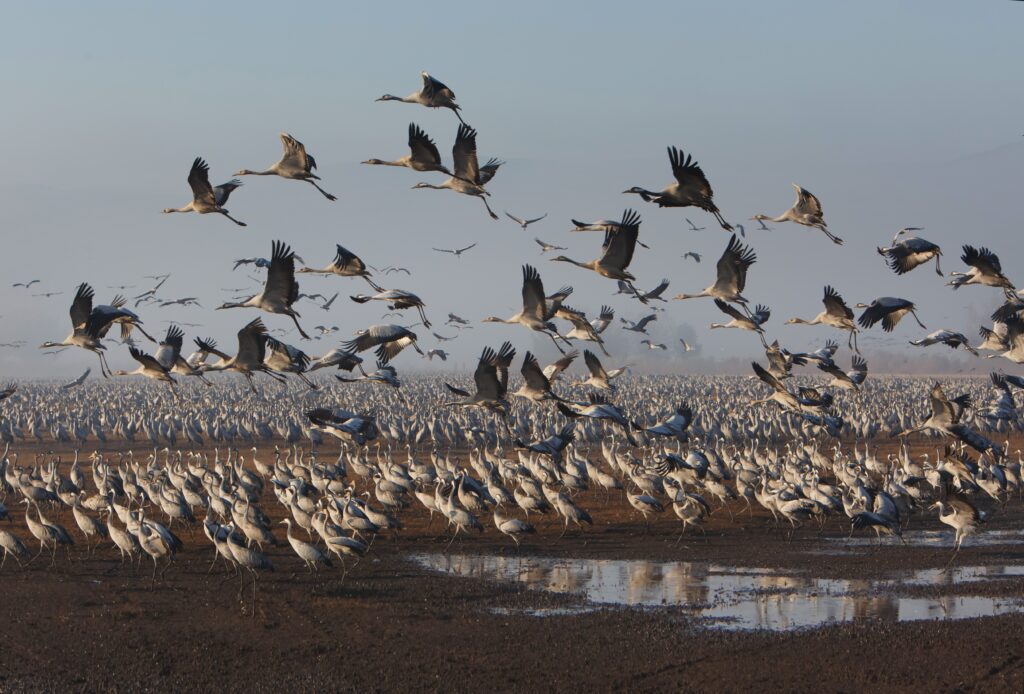
Shutterstock
Sandhill cranes migrate thousands of miles between their Arctic breeding grounds and southern wintering sites. Their loud, resonant calls echo across wetlands as they travel in large, synchronized flocks. These cranes rely on thermal currents to conserve energy during flight, often traveling hundreds of miles in a single day. Juveniles face high mortality rates, with up to 30% not surviving their first migration. Yet their journey remains a spectacle of unity and endurance, showcasing the delicate balance of survival in the natural world.
11. Leatherback Sea Turtles
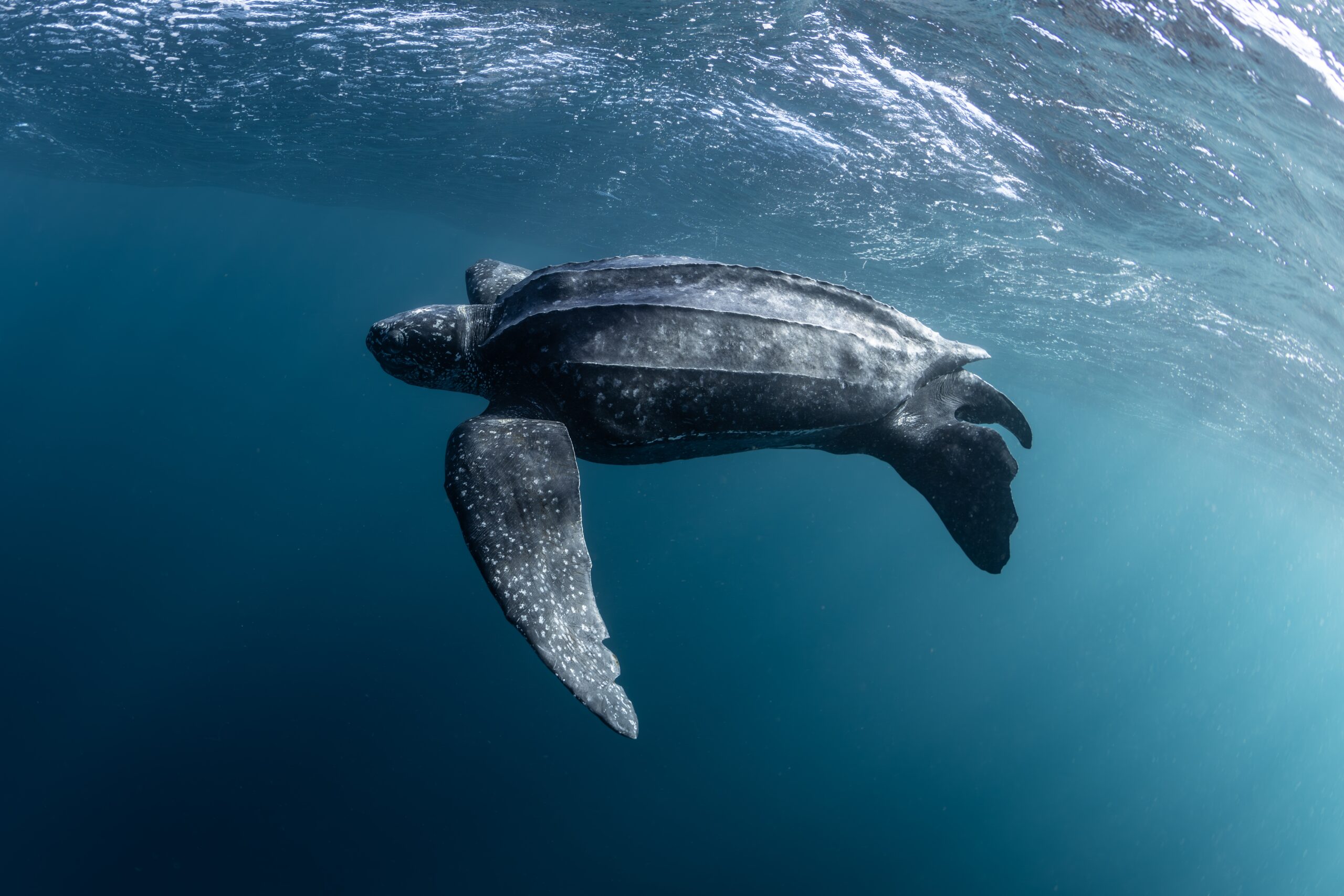
Shutterstock
Leatherback sea turtles embark on journeys of up to 10,000 miles, crossing entire oceans between feeding and nesting sites. Guided by Earth’s magnetic fields, these ancient mariners navigate with precision that still baffles scientists. Hatchlings face immense odds, with only 1 in 1,000 surviving to adulthood due to predators and environmental threats. As they return to the very beach where they were born, their migration is a testament to the resilience and persistence of life in the face of overwhelming challenges.
12. Caribou
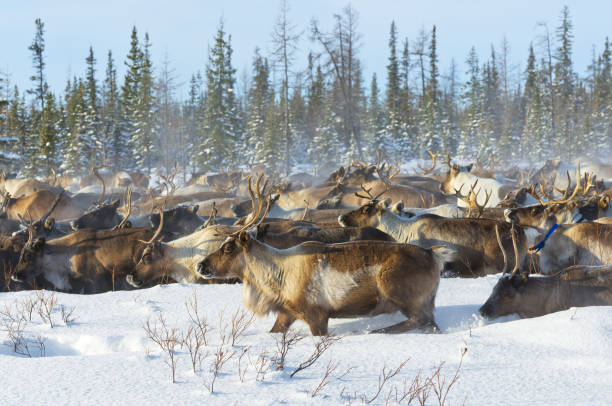
Caribou traverse the Arctic tundra in one of the longest terrestrial migrations, covering up to 3,000 miles annually. Guided by ancient instincts and environmental cues, they cross rivers, endure snowstorms, and evade predators like wolves and bears. Calves face the highest mortality rates, with up to 40% lost to exhaustion or predation. These migrations are vital for maintaining the tundra ecosystem, as caribou fertilize the land with their movement. Their perseverance against harsh conditions showcases the delicate yet resilient balance of life in the Arctic.
13. Red Knots
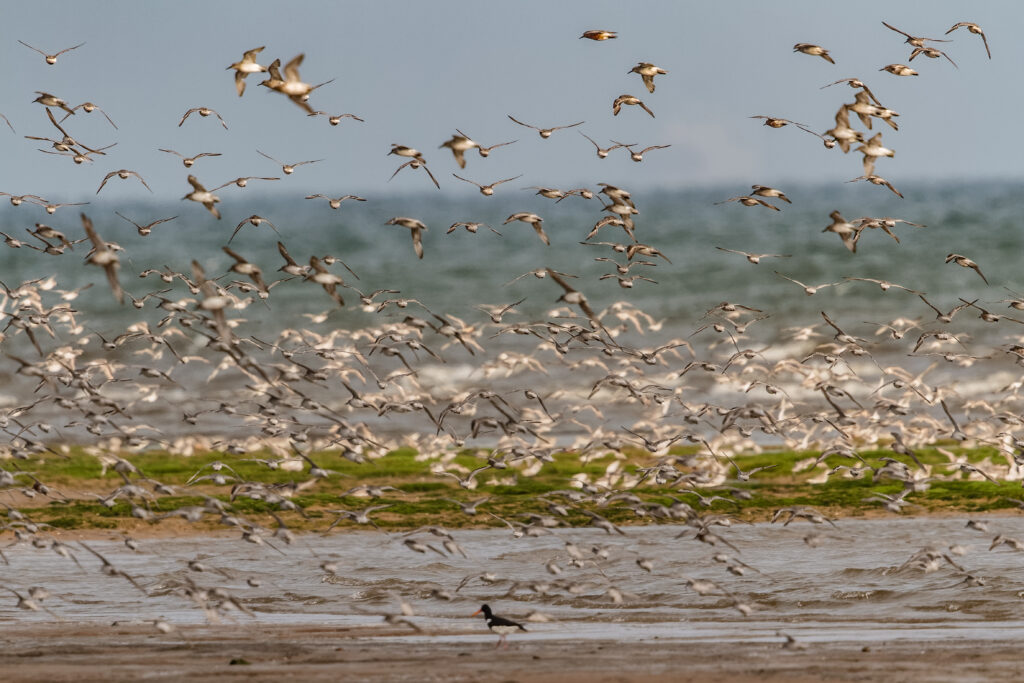
Shutterstock
Red knots undertake a grueling migration of up to 9,000 miles, traveling from Arctic breeding grounds to South America. Their survival depends on precise timing—if they miss critical stopovers, like Delaware Bay’s horseshoe crab egg feast, they may not make it. These birds double their body weight during refueling stops, enabling them to complete their long journey. With only 50% of juveniles surviving their first migration, the stakes are high. Yet red knots’ endurance and precision reflect the remarkable resilience of migratory species.
14. Bar-Tailed Godwits
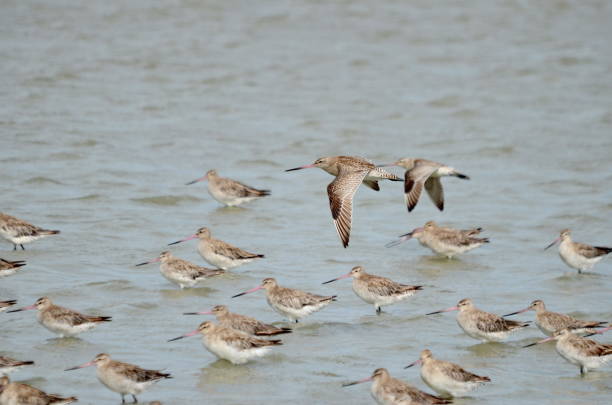
Bar-Tailed Godwits set the record for the longest nonstop flight of any bird, traveling up to 7,500 miles from Alaska to New Zealand. Crossing the vast Pacific Ocean, these birds fly for over a week without rest, food, or water. They shrink their internal organs to conserve energy and arrive at their destination with pinpoint accuracy. Scientists marvel at their ability to endure such a demanding journey, which pushes the boundaries of avian endurance. Their migration is a breathtaking mph of navigation and survival.
15. Emperor Penguins
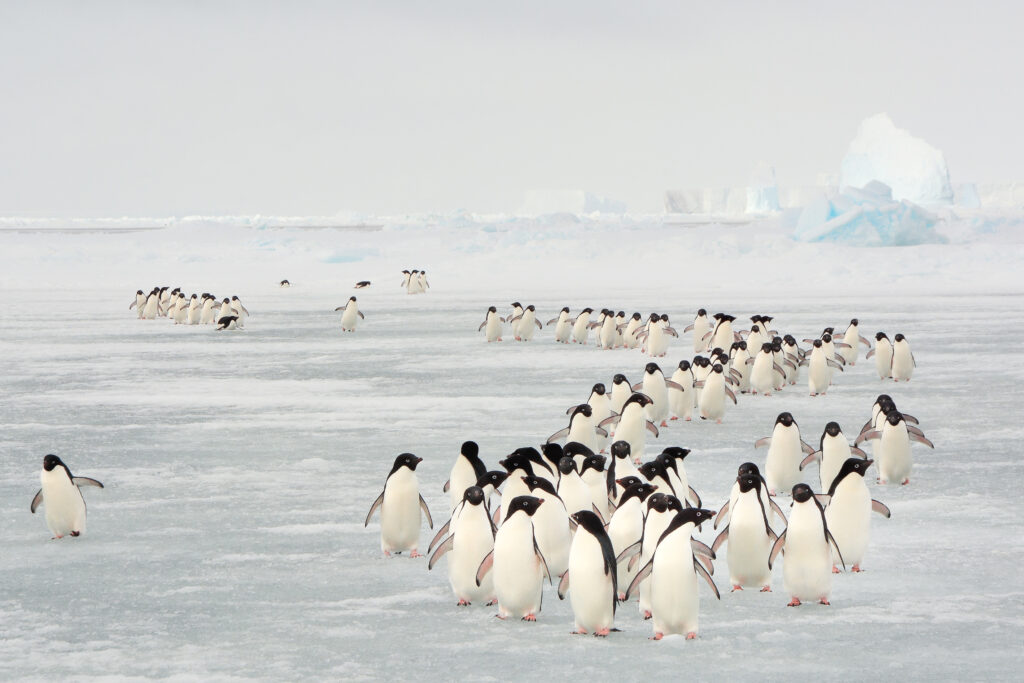
Shutterstock
Emperor penguins brave Antarctica’s brutal winter to march up to 75 miles across the ice to reach their breeding grounds. Enduring temperatures as low as -40°F and wind speeds over 100 mph, they huddle together in tightly packed groups to conserve heat. Males incubate the eggs, balancing them on their feet for two months without food, while females trek back to the ocean to hunt. Their journey, driven by instinct and resilience, ensures the survival of their species in Earth’s harshest environment.
16. European Eels
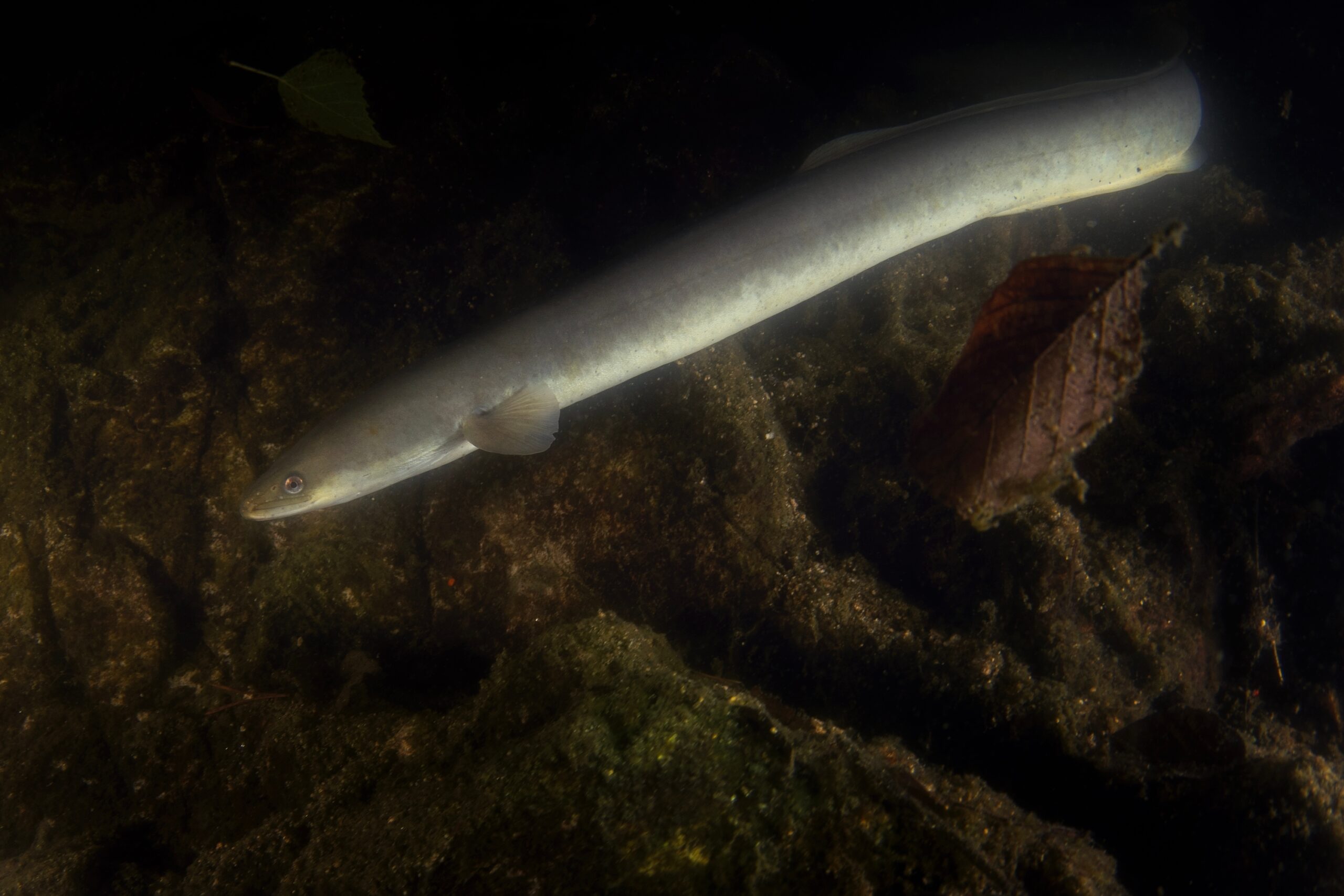
Shutterstock
European eels embark on an enigmatic migration spanning thousands of miles to the Sargasso Sea, where they spawn and die. Their journey begins in freshwater rivers, taking them through estuaries and across the Atlantic Ocean. Despite decades of study, scientists remain baffled by their navigation abilities, which may involve Earth’s magnetic fields and ocean currents. Larvae drift back to Europe, completing a mysterious life cycle that has puzzled researchers for centuries. The eel’s migration remains one of nature’s most haunting secrets.
17. Sand Tiger Sharks
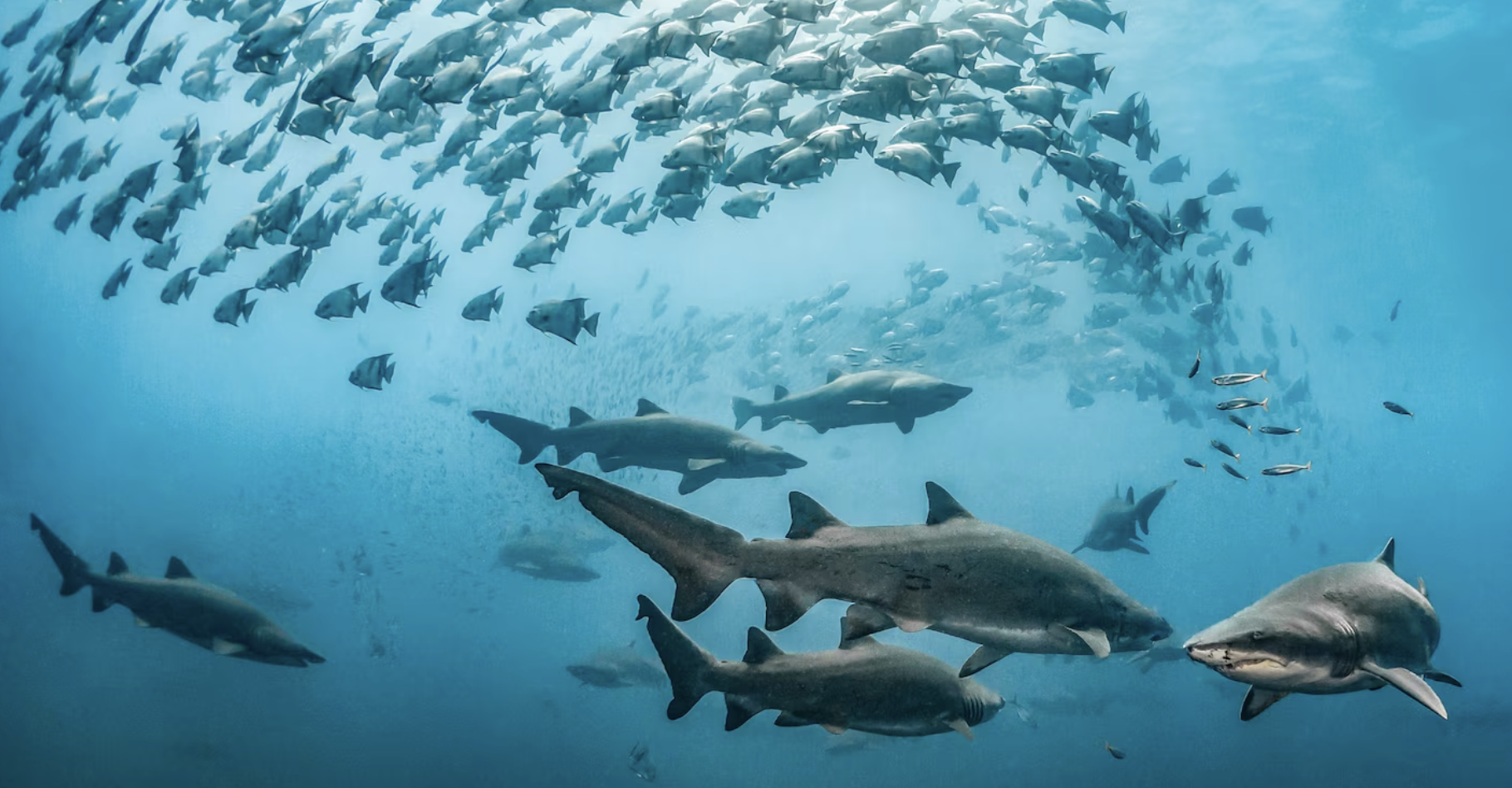
Sand tiger sharks travel thousands of miles along coastlines, following changes in water temperature to reach breeding and feeding grounds. These formidable predators rely on Earth’s magnetic field and chemical cues to navigate the ocean’s vastness. Juveniles face immense challenges, as their survival depends on avoiding larger predators and finding suitable habitats. With their deliberate swimming and sharp instincts, sand tiger sharks embody the silent power of ocean migrations, blending danger and mystery in their long journeys.
18. Dragonfly Globe Skimmers

Weighing less than a paperclip, dragonfly globe skimmers hold the record for the longest insect migration, covering up to 11,000 miles. These tiny travelers cross oceans, riding wind currents to conserve energy. Their journey, spanning from India to East Africa, involves multiple generations, each contributing to the completion of the migration. Scientists are still unraveling how they navigate such immense distances with such delicate bodies. Their endurance proves that even the smallest creatures can achieve extraordinary feats of survival. (91 words)
19. Sockeye Salmon

Sockeye salmon battle upstream for up to 900 miles to return to their birthplace, overcoming waterfalls, rapids, and predators like bears and eagles. Guided by an extraordinary sense of smell, they find the exact river where they were born. Once they spawn, their bodies decompose, nourishing the ecosystem and the next generation of salmon. Only a fraction of the population survives the journey, but their sacrifice sustains countless species. Their migration is a powerful testament to nature’s interconnected cycles.
20. Antarctic Krill

Antarctic krill undertake immense vertical migrations of up to 1,000 feet daily, moving between surface waters and the ocean depths. This nightly journey feeds everything from fish to whales, sustaining one of the planet’s most intricate ecosystems. Krill rely on light cues to time their ascent, but their movements are fraught with danger from predators. Despite their size—barely two inches long—their migration powers the Southern Ocean’s food web, a hidden yet essential force of life in Earth’s most remote waters.
From the relentless Arctic tern to the delicate monarch butterfly, these migrations reveal the awe-inspiring determination of life. Whether crossing oceans, scaling mountains, or braving brutal winters, these creatures embody resilience and adaptability, reminding us of the interconnected beauty of our planet. Nature’s greatest travelers inspire wonder, proving that no journey is too great when survival depends on it.


